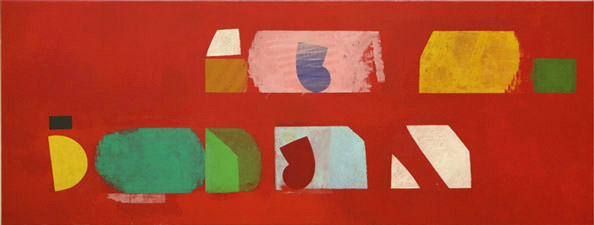It is hard to appreciate a work of art on the Web.
There are limits to the faithful reproduction of colors and proportions.
As obvious as it may sound, the real quality of a painting can be ascertained only on viewing the original.
The documentation presented in these pages is a selection of works in watercolor on paper and acrylic and oil on canvas chosen out of those produced over the last 25 years.
The images are positioned in accordance with a visual criterion rather than in chronological sequence, certain works being placed together even though produced in different periods.
My experience so far reveals within the inner space an evolutionary process that is not expressed toward the exterior in an orderly, sequential way.
A composition of 1988 can thus find its most natural continuation in a new work of 2002, other approaches having been tried out in the meantime, put aside momentarily, and then taken up again.
All the paths converge on a single“design” that is not visible as a whole.
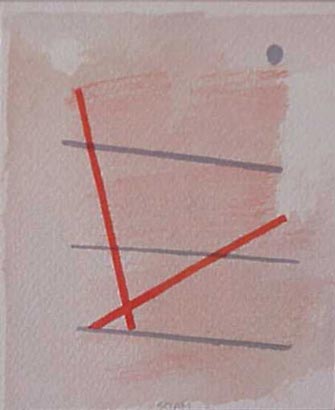
Untitled - Perugia 1980 - Watercolor on Paper - cm 14 x 17 - Private Collection, Roma

Untitled - New York City 1982 - Acrylics and Paper on Canvas - cm 38 x 44 - Private Collection
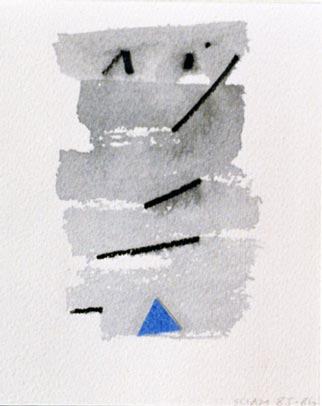
Untitled - New York City 1985 - Watercolor on Paper - cm 14 x 21 - Private Collection Hamburg
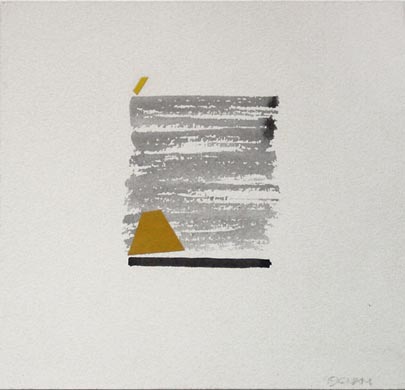
Untitled - New York City 1984 - Watercolor and Paper on Paper - cm 17 x 18 - Sammlung Fontana-Hentschel, Berlin
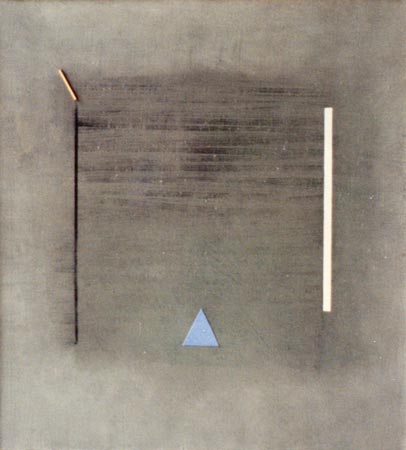
Ohne Titel - Berlin 1988 - Acrylics, Pastel, Paper and Wood on Canvas - cm 40 x 45 - Sammlung Hellermann, Berlin
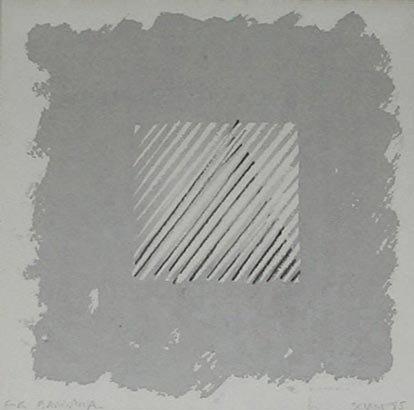
Untitled - New York City 1985 - Watercolor on Paper - cm 17 x 19 - Private Collection, Zürich
Words are not life, but poets are able to give them greater freshness and vitality than a running brook.
The seven musical notes are insignificant sounds in themselves but capable, when arranged in certain patterns, of greater eloquence than a sunny day.
Lines, planes and colors can also serve to pay tribute to life.
But filling a canvas with just any shapes and colors is not enough to produce a work of abstract art. Like its verbal and musical counterparts, the visual language also has its rules that we must learn how to use and understand.
Painting means observing the world, breathing in its shapes and colors, and transforming its infinite variety into the most condensed forms of thought.
"Painting is not copying the object in a servile manner but capturing the harmony between numerous relations and transposing them into your own system, developing them in accordance with a new and original logic." (Cézanne)
This is the meaning of abstraction.
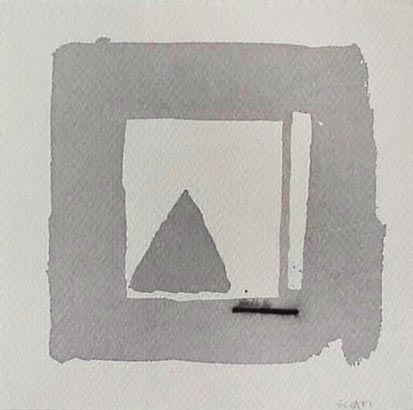
Untitled - New York City 1985 - Watercolor on Paper - cm 16 x 17 - Private Collection Perugia
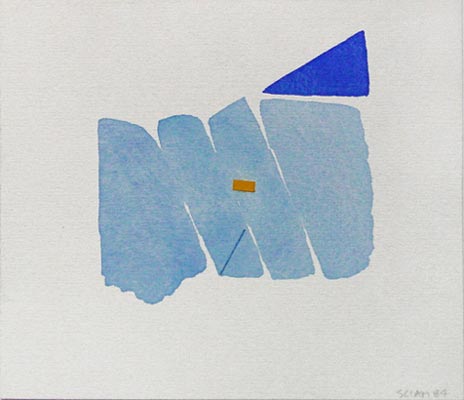
Untitled - San Juan 1984 - Watercolor on Paper - cm 18 x 15,5 - Sammlung Fontana-Hentschel, Berlin
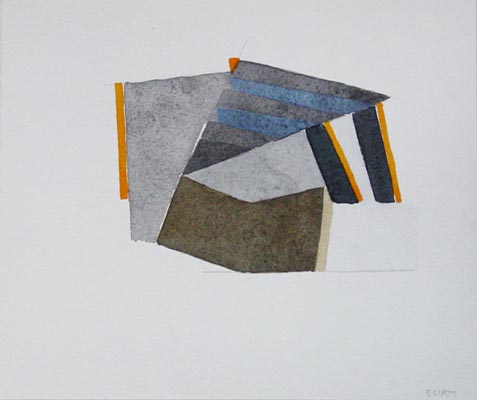
Untitled - San Juan de Puerto Rico 1984 - Watercolor on Paper - cm 18 x 21 - Property of the Artist
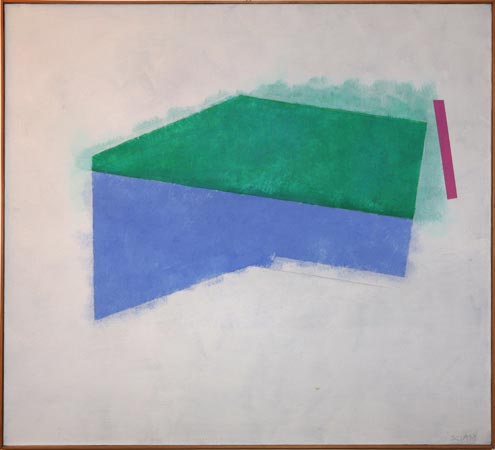
Ohne Titel - Acrylics on Canvas - cm 90 x 100 - Berlin 1987 - Collezione Cannevale Stentella, Perugia

Composizione 6 - Acrylics on Canvas - cm 30 x 120 - Lanuvio 1998 - Collezione Cannevale Stentella, Perugia
There are projects of which we are aware and "projects" of which we are not fully conscious: pathways that are revealed step by step, that stretch through an entire lifetime to become highways and lead us much farther than all the things we know or think we know.
The "project" of my life is revealed through art.
I began by painting landscapes, still lives, and portraits.
Very soon I realized that the true content of a painting is its form.
"I would like to see them here, all the ones who write about us, in front of your ugly mug and me fumbling with my tubes of paint and brushes (...)
They are a thousand miles away (...)
And you can imagine how little they know that you can make a mouth sad or a cheek smile by combining a shade of green with a red (...)." (Cézanne)
Content depends on form, above all in painting.

Omaggio a PMHM - Acrylics on Canvas - cm 110 x 120 - Roma 1991 - Collezione Mancini Sereni, Perugia
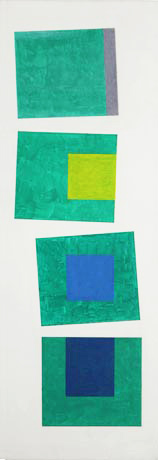
Untitled - Acrylics on Canvas - cm 30 x 100 - Lanuvio 1994 - Collezione Mancini Sereni, Perugia
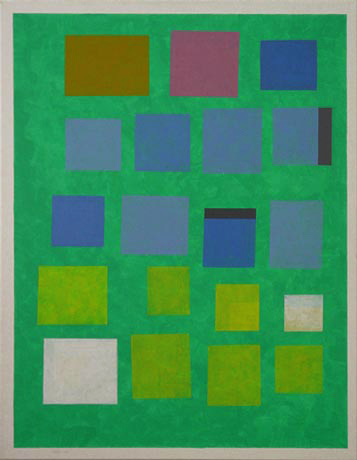
Composizione 8.2002 - Acrylics on Canvas - cm 70 x 90 - Berlin 2002 - Collezione Mancini Sereni, Perugia
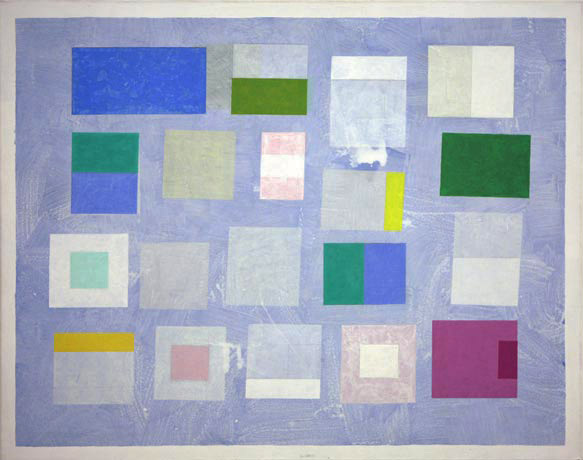
Composizione 23 - Acrylics on Canvas - cm 80 x 100 - Berlin, 2003/08 - Collezione Fario Sciurpi, Perugia
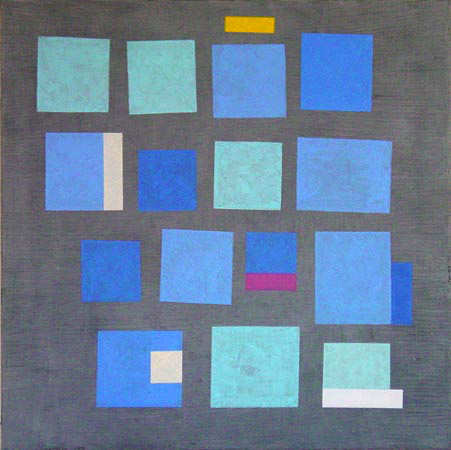
Composizione 3 - Acrylics on Canvas - cm 91,4 x 91,4 - Aprilia 2002 / Berlin 2004 - Collezione Pierantoni, Perugia
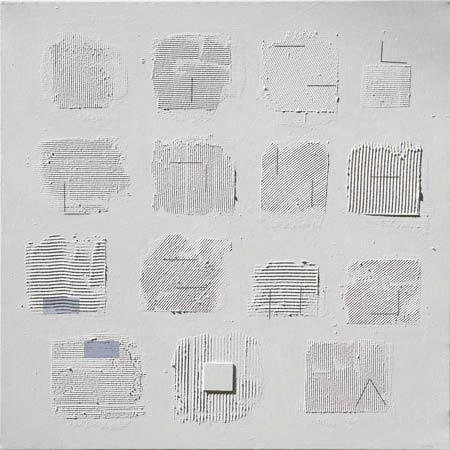
Composizione 15 / 2003 - Acrylics, Modelling Paste and Wood on Canvas - cm 80 x 80
Berlin 2003 - Private Collection, Perugia
Utopian though it may sound, I imagine compositions combining the uninterrupted gestuality of Pollock and the deep, deft construction of Cézanne, Matisse, and Mondrian.
The spontaneous matter and unexpected form born out of the continuity of a gesture. A gesture that is the result of a moment of concentration. A gesture uninterrupted by thought. Sometimes the universe appears in an instant.
Sensibility, talent and intelligence are certainly necessary, but not enough.
For those endowed with the capacity, it takes an entire lifetime of work to express the universal through a spontaneous gesture.
The ancient Chinese were aware of this.
Expressing the "whole" in one.
The spontaneity I am talking about corresponds to the most advanced stage of a long and patient exercise of discipline that must be completed before you can let go without missing the "target".
Matisse: "Novice painters think they are painting from the heart. Artists at the peak of their development also think they are painting from their heart, but they alone are right, because the training and discipline they have imposed upon themselves enable them to accept its impulses."
Giving free rein to your instincts is not enough to create a work of art.

Composizione 6/09 - Acrylics and Paper on Canvas - cm 90 x 100 - Aprilia 2009 - Property of the Artist
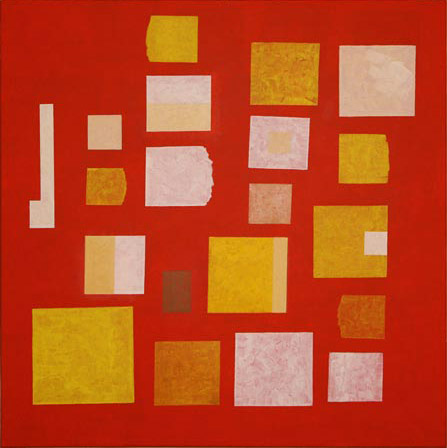
Composizione - Acrylics on Canvas - cm 100 x 100 - Berlin 2003 - Collezione Renzo-Salvadori, Perugia

Untitled - Acrylics and Paper on Canvas - cm 30 x 30 - Roma 1990-95 - Collezione Renzo-Salvadori, Perugia
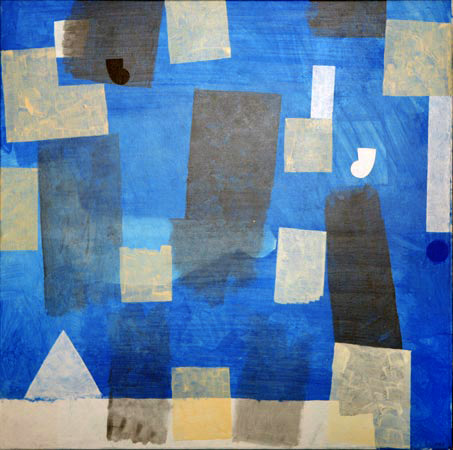
Composizione 7 - Acrylics and Paper on Canvas - cm 60 x 60 - Berlin 2003 - Collezione Renzo-Salvadori, Perugia
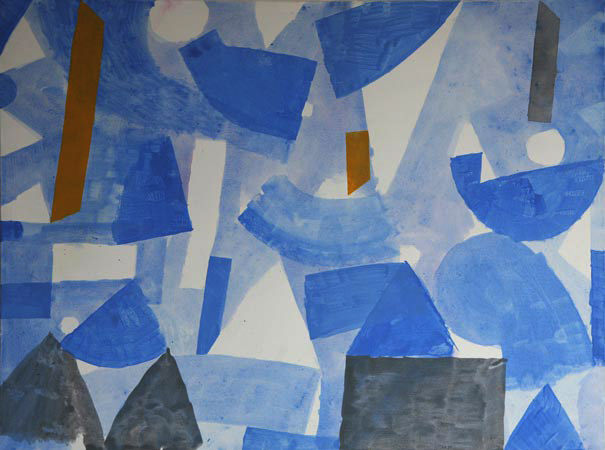
Composizione 7 - Acrylics on Canvas - cm 60 x 80 - Aprilia, 2004 - Private Collection Berlin

Composition 1-2010 - Acrylics on Canvas - cm 55 x 85 - Aprilia, 2009-2010 - Property of the Artist
Sometimes you make a sketch, work on the composition, and try to plan various colors. The plans then change along the way.
Forcing the brush to follow a path that is wholly planned leads to no appreciable results. It is necessary to take risks. You must put the whole of yourself in the brush and not only the safe part that knows. Good results are never obtained in painting solely from the part that knows.
Isamu Noguchi used to say that there are two ways to address a question. You can start from an idea and seek to implement it step by step or start out knowing nothing, following your nose, and end up with solutions which are usually deeper and more complete than the ones you could have thought of.
A “slip” of the hand sometimes elongates the brushstroke too much and the shape it was meticulously painting is distorted.
Such event used to annoy me.
Now I have learned to wait, to look and see whether that “slip” means something, as it often does.
Painting teaches me how to live.
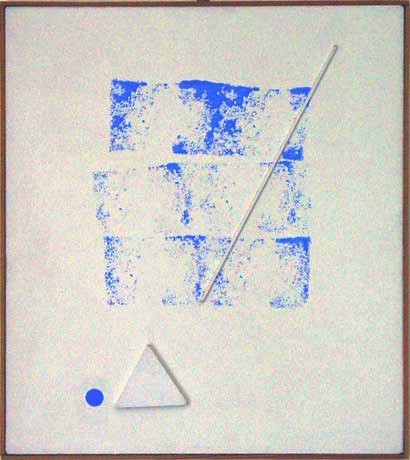
Untitled - Acrylics and Wood on Canvas - cm 40 x 45 - New York City, 1984 - Private Collection Frankfurt a.M.
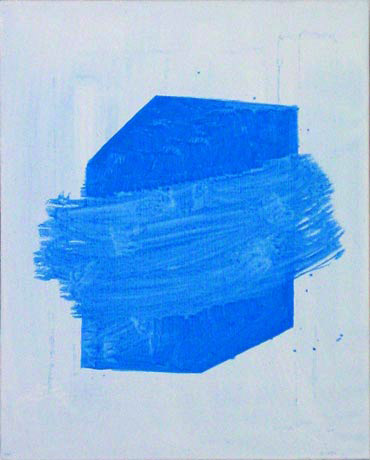
Composizione 3 - Acrylics on Canvas - cm 40 x 50 - Berlin, 2002 - Bianca Battaggion, Berlin
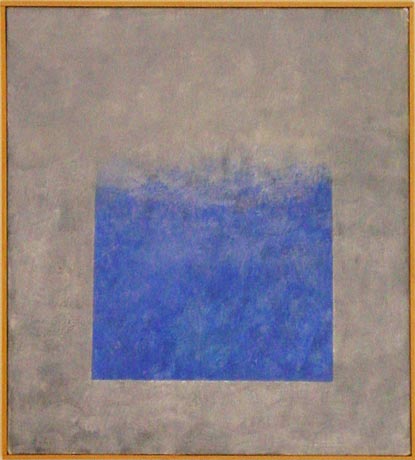
Quadrato Blu - Acrylics on Canvas - cm 40 x 45 - Berlin 1987 - Collezione Renzo-Salvadori, Perugia

Composition 22 / 2014 - Acrilycs on Canvas - cm 115 x 150 - Berlin 2014 - Property of the Artist
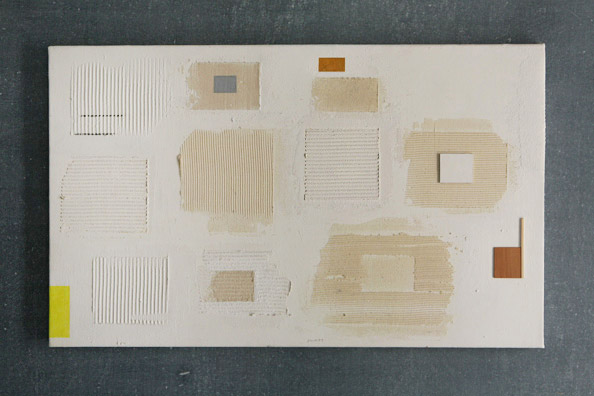
Composition 9-2009 - Acrylics, Balsa and Pencil on Canvas - cm 45 x 70 -
Aprilia 2007-09 / Berlin 2012 -
Property of the Artist

Composizione 3/2003 - Acrylics and Pastel on Canvas - cm 20 x 80 - Berlin 2003 - Collezione Pierantoni, Perugia
I begin with one color that is then followed by another. This relationship generates a third and so on. But color also has extension and must be given shape as it expands on the canvas.
The proportions and the relations between the parts engender sequences that must be capable of recreating the rhythms of life without being pinned down to the contingent appearance of the individual object, which today changes from one minute to the next.
As we move through the space of the cities we inhabit, the consciousness is broken down into a host of fragments that prevent an overall vision.
It is not the fleeting appearances of things that matter in the dynamic and ever-changing spaces of the present (we have photography and television for this) but rather the possibility of establishing relations between them.
In the ideal space of the painting, the chaotic flux of objects is distilled into the pure and radiant forms of the spirit to suggest more harmonious syntheses.
What is needed today is the ability to represent all things from all possible viewpoints, that is to say, to abstract and rediscover being in becoming.

Untitled - Acrylics and Pastel on Canvas - cm 30 x 120 - Berlin 1989 / Roma 1992 - Collezione Pierantoni, Perugia
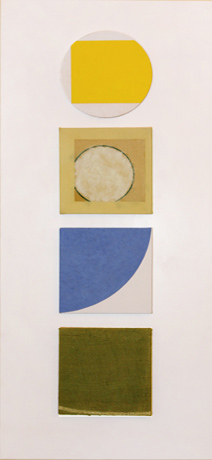
Composizione 5/09 - Acrylics, Paper and Pastel on Canvas - cm 30 x 140 - Aprilia 2009 - Property of the Artist
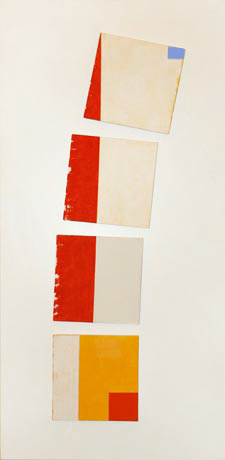
"It's never too late to have a happy childhood"
Acrylics and Oil on Canvas - cm 30 x 140 - Berlin 1989 - Property of the Artist
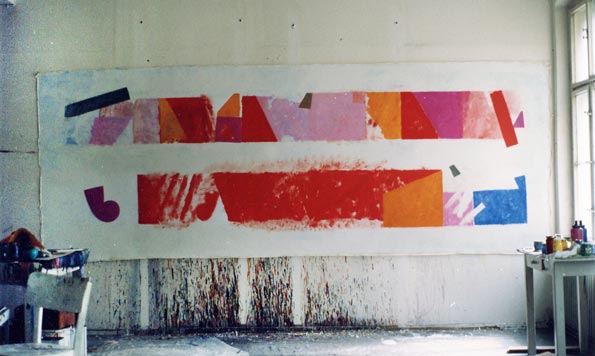
Composizione 1/87 - Acrylics on Canvas - cm 160 x 450 - Berlin 1987 - Property of the Artist
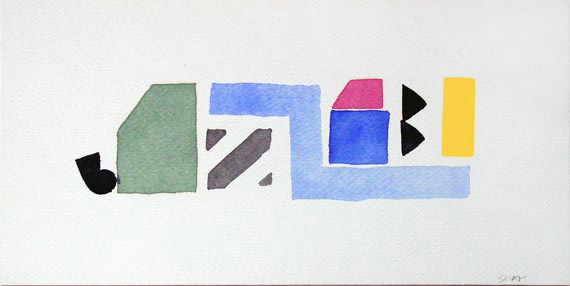
Ohne Titel - Watercolor on Paper - cm 15 x 30 - Berlin 1987 - Private Collection Perugia
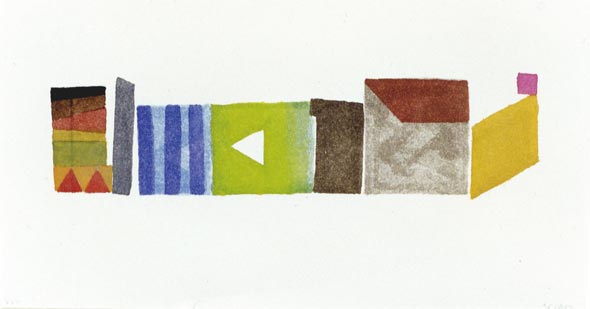
Untitled - Watercolor on Paper - cm 11 x 26 - New York City 1985 - Private Collection, Barcelona
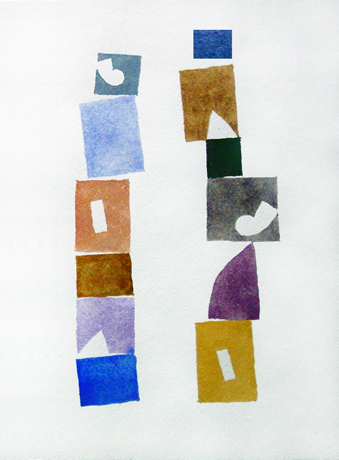
Composition 2 - Watercolor on Paper - cm 18 x 26,5 - New York City 2002 / Aprilia 2010 - Property of the Artist

Composizione 18/2012 - Acrylics on Canvas - cm 90 x 100 - Berlin 2011-12 - Property of the Artist
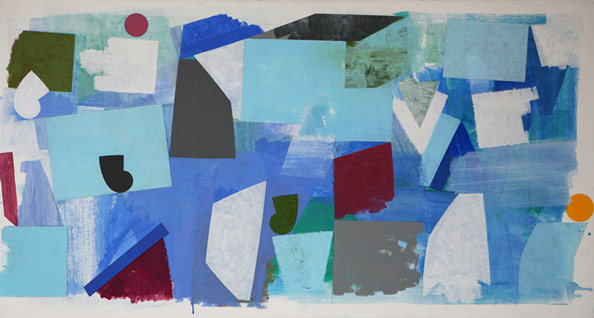
Composition 25 / 2014 - Acrilycs on Canvas - cm 80 x 150 - Berlin 2014 - Property of the Artist
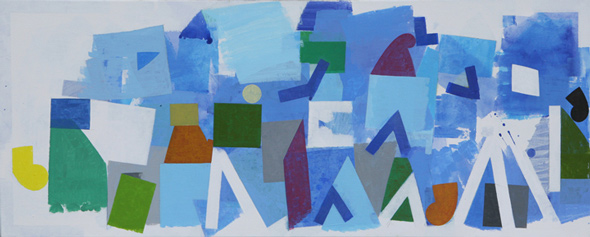
Composizione 30/2012 - Acrylics on Canvas - cm 70 x 180 - Berlin 2011-12 - Property of the Artist
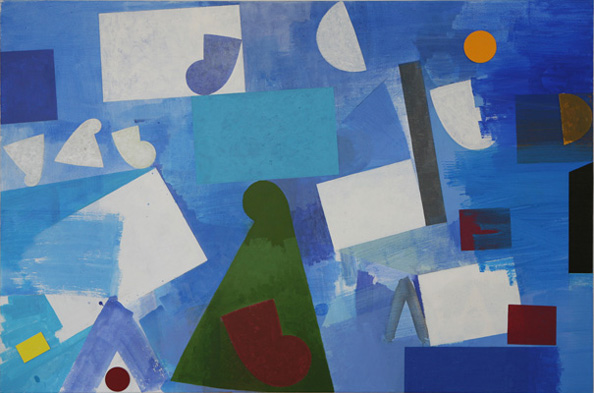
Composizione 22/2012 - Acrylics on Canvas - cm 120 x 180 - Berlin 2011-12 - Property of the Artist
The beauty and the rightness of certain combinations of color and forms are things that cannot be taught or learned and still less explained in words. They are either there or not there. You either know how to recognize them or you do not. Color has its own inherent expressive strength that a good painter must know how to calibrate, like the notes of a musical composition.
Filling a canvas up with just any shapes and colors is not enough to produce a work of abstract art, just as any combination of words or notes is not enough to create a work of literature or music.
Just as the same words can be used in verbal language to come out with nonsense or to construct splendid phrases rich in meaning, so it is with the language of forms and colors. The dictionary is the same but the difference between an image of fully expressed significance and one devoid of sense mainly depends on the use made of that dictionary.
In the absence of established rules and canons for the new form of painting, we are today at a primitive stage where everyone thinks themselves capable of creating an abstract work of art.
As usual, time will tell.

Composizione 07/2012 - Acrylics and Balsa on Canvas - cm 68 x 70 - Berlin 2012 - Property of the Artist
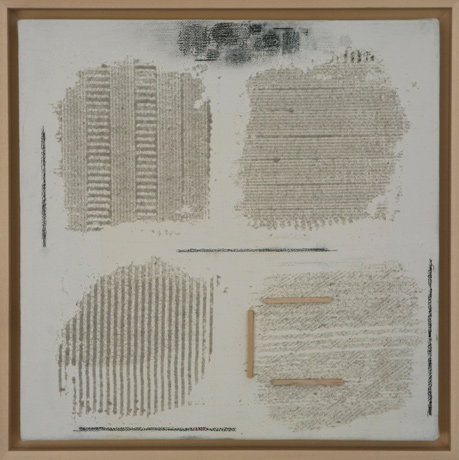
Composizione 02/2011 - Acrylics, Pencil and Balsa on Canvas - cm 30 x 30 - Roma / Berlin 2011 - Property of the Artist
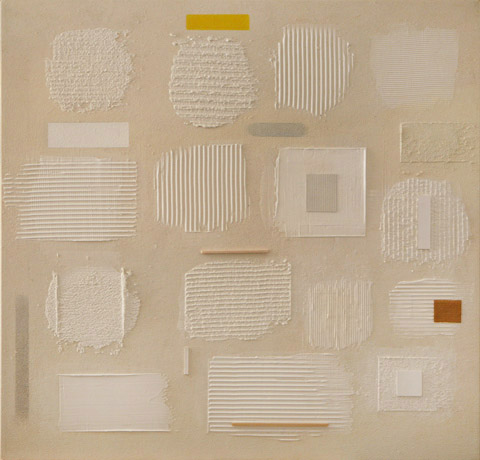
Composizione 15/2012 - Acrylics, Pastel, Paper and Balsa on Canvas - cm 70 x 70 -
Berlin 2011-12 - Property of the Artist

Composizione 03/2011 - Acrylics, Pastel, Paper, Balsa and Canvas on Canvas -
cm 30 x 30 - Roma / Berlin 2011 - Property of the Artist
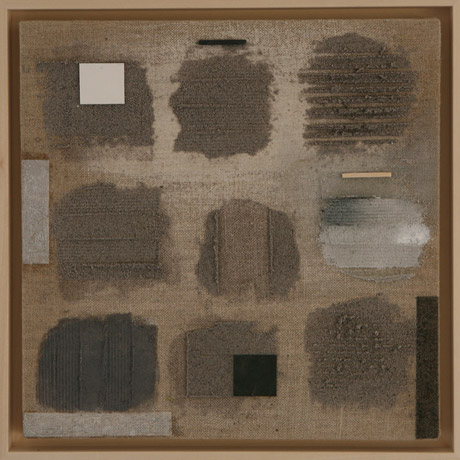
Composizione 31/2011 - Acrylics, Pastel, Paper, Balsa on Canvas -
cm 30 x 30 - Berlin 2011 - Property of the Artist
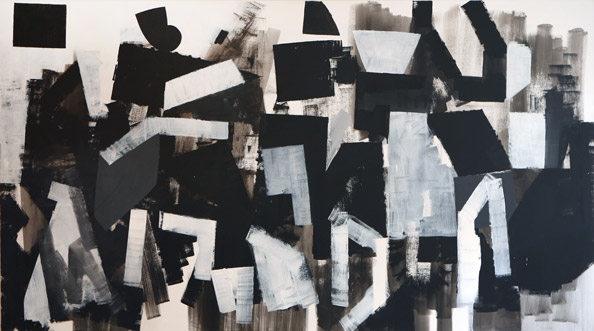
Composition BN - Acrilycs on Canvas - cm 110 x 200 - Berlin 2015 - Property of the Artist

Composizione 04/2011 - Acrylics, Pastel and Balsa on Canvas - cm 30 x 30 - Roma / Berlin 2011 -
Sammlung Fontana-Hentschel, Berlin
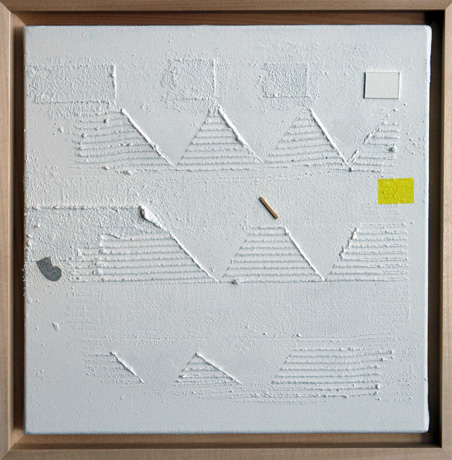
Composizione 06/2011 - Acrylics, Paper and Balsa on Canvas - cm 30 x 30 - Roma / Berlin 2011 -
Property of the Artist
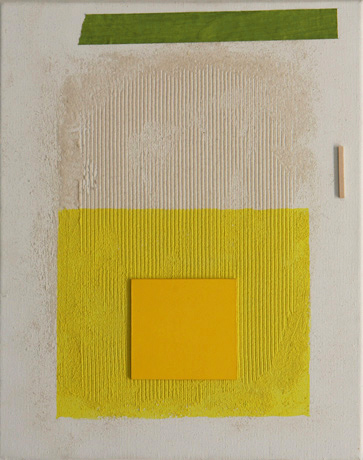
Composizione 11/2012 - Acrylics, Paper and Balsa on Canvas - cm 24 x 30 - Berlin 2012 - von Zezschwitz-Köhler, Berlin
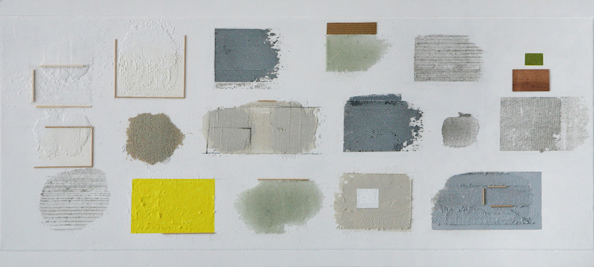
Composizione 8/2012 - Acrylics, Paper, Pastel, Balsa on Canvas - cm 40 x 100 - Berlin 2011-12 - Property of the Artist
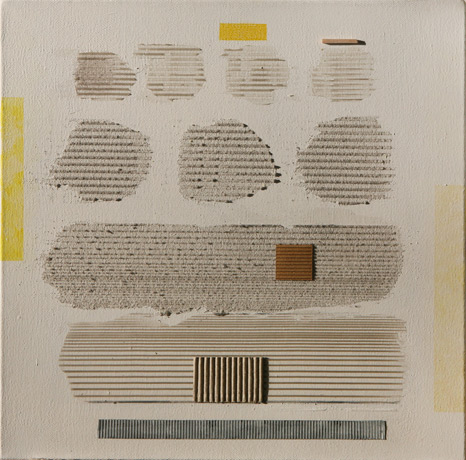
Composizione 14/2012 - Acrylics, Paper, Pastel, Balsa on Canvas - cm 40 x 40 - Berlin 2012 - Property of the Artist
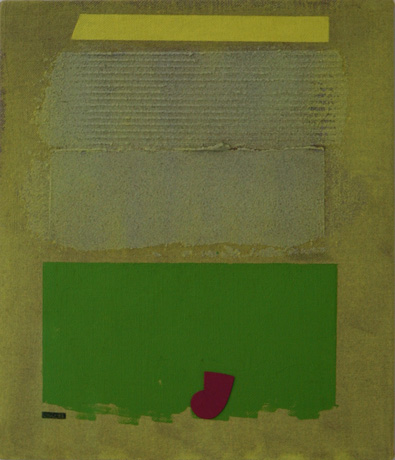
Composizione 5/2012 - Acrylics and Paper on Canvas - cm 40 x 35 - Berlin 2011-12 - Collezione Pierantoni, Perugia

Composizione 30/2012 - Acrylics and Paper on Canvas - cm 45 x 180 - Roma 1998 / Berlin 2012 - Property of the Artist
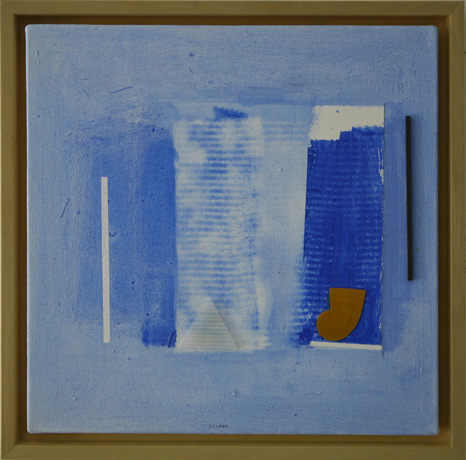
Composizione 8/2013 - Acrylics, Polycarbonate, Wood and Paper on Canvas - cm 30 x 30 -
Berlin 2013 - Private Collection, Frankfurt a.M.
